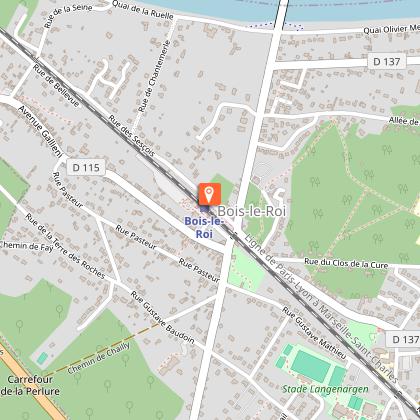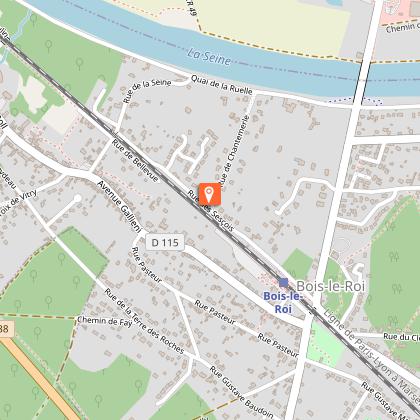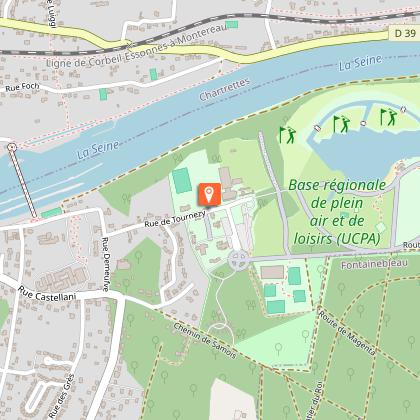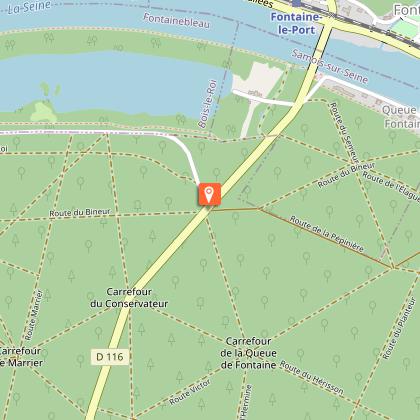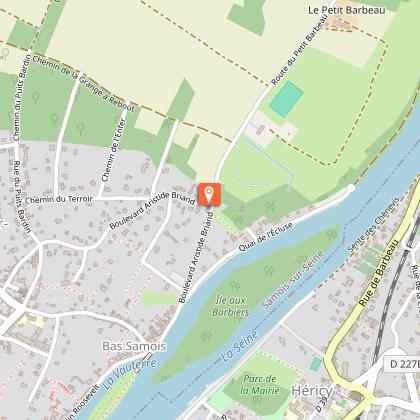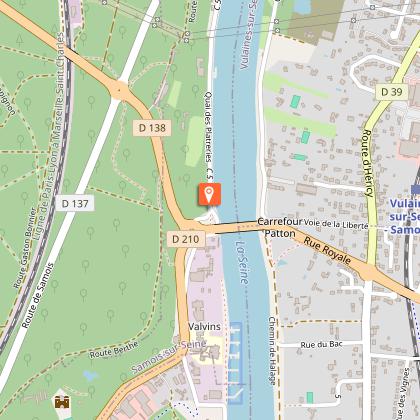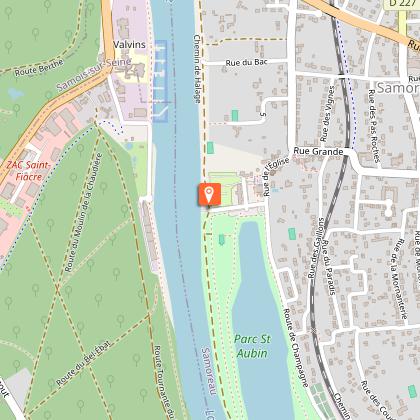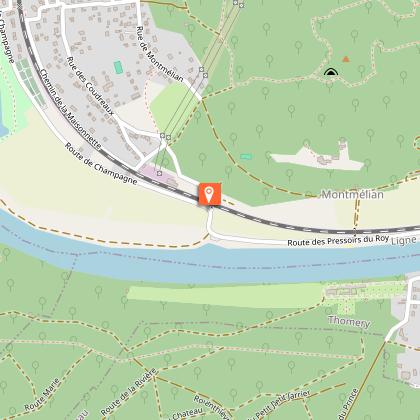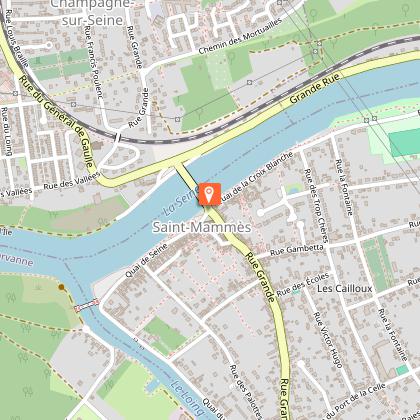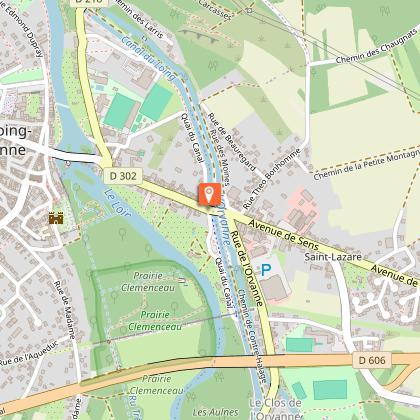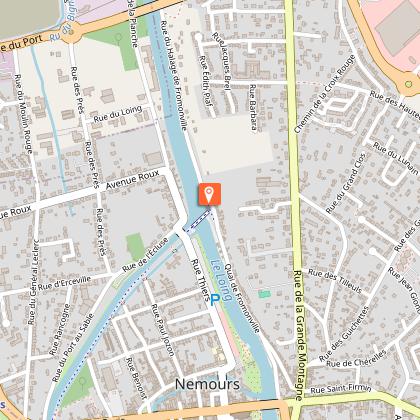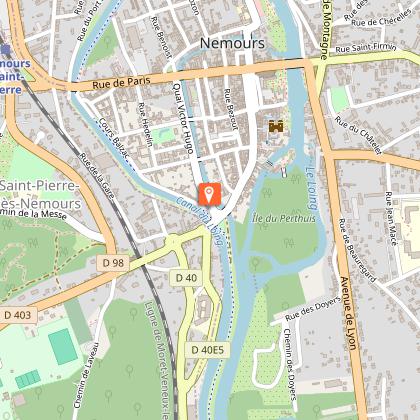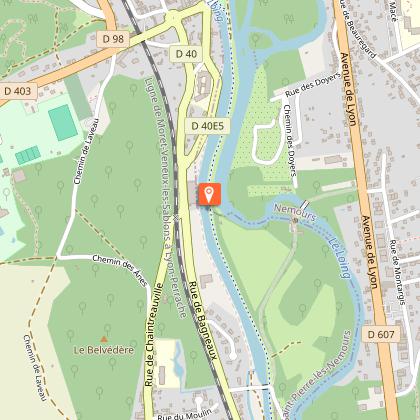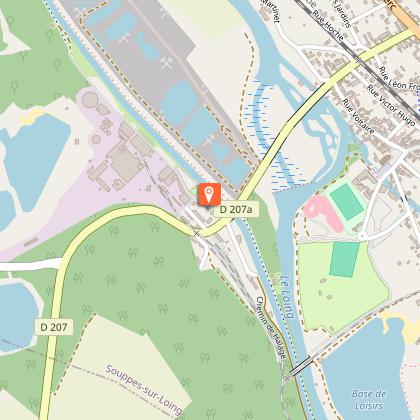警报
警报
练习类型
公路自行车
Presentation
地图
步骤
兴趣点
Cirkwi 简报
评级和评论
周围的看点
南部Seine-et-Marne的Scandibérique – 从Bois-le-Roi到Souppes-sur-Loing

信用 : Amelie Laurin
Cirkwi 简报
发现Scandibérique :从Bois-le-Roi到Souppes-sur-Loing的自行车之旅
踏上南塞纳-马恩省迷人的风景线Scandibérique之旅,这是塞纳-马恩省吸引力提供的一项宝藏。这条长60公里的自行车探险线沿着塞纳河和洛亚河,不仅提供了身体运动的机会,更是一个通向法国精髓的大门。从浓密的古老森林到保护完好的自然景观,每一次踩动脚踏板都让你更贴近法国历史和文化的心脏。通过充满特色的村庄和历史地标点缀的风景,这次体验超越了简单的观光。感受微风,沉浸在充满活力的氛围中,成为这个地区活生生的图画的一部分。
简明技术概述
这条长54.9公里的路线最高海拔为78米,最低海拔为41米。骑行者应准备好应对总正海拔上升高度在217到225米之间的挑战。尽管相对缓和,这片起伏的地形仍然对中级骑行者构成一定的挑战,使其成为完美的选择。从Bois-le-Roi到Souppes-sur-Loing的旅程充满了一系列增强骑行体验的技术特点,要求同时具备耐力和战略。基本上,它提供了体力运动和风景欣赏的平衡混合。
季节性提示和安全
开始这次自行车探险需要周密的准备。春天可以欣赏到鲜花绽放的风景,但路面可能会湿滑;确保您的自行车装备了适合泥泞路面的器材。夏天有着翠绿的景色,但在阳光下补水很重要。秋天带来了五彩斑斓的色彩,尽管落叶可能很容易打滑。冬天虽然荒凉,但有着自己独特的魅力,但冰冷的天气需要谨慎。始终佩戴头盔,随身携带维修工具包,并告知他人您的行程安排。接受这些建议可以提高安全性和乐趣,无论是在任何季节。
塞纳-马恩省的历史宝藏
塞纳-马恩省地区沉浸在丰富的历史和文化中,既是法国遗产的守护者,也是展示之所。从Bois-le-Roi迷人的门前一直到Souppes-sur-Loing,这条路线就是一个开放天空下的活生生的博物馆。它穿过见证了几个世纪历史的地区,从中世纪的战斗到文艺复兴时期的艺术繁荣。沿途的城堡,教堂和博物馆不仅仅是景点,而是镌刻在石头中的故事书,邀请您探索塑造了这个迷人地区的叙事。
最佳旅游天气
了解塞纳-马恩省的气候
\n塞纳-马恩省的气候主要为海洋性气候,冬季温和,夏季宜人,可以全年骑行。为了获得最佳体验,请在晚春和早秋之间计划您的旅程。这些季节的天气最为有利,降雨较少,温度既不太热也不太冷。无论季节如何,请始终提前检查天气预报,因为天气条件可能会波动,可能会影响您的骑行体验。
踏上南塞纳-马恩省迷人的风景线Scandibérique之旅,这是塞纳-马恩省吸引力提供的一项宝藏。这条长60公里的自行车探险线沿着塞纳河和洛亚河,不仅提供了身体运动的机会,更是一个通向法国精髓的大门。从浓密的古老森林到保护完好的自然景观,每一次踩动脚踏板都让你更贴近法国历史和文化的心脏。通过充满特色的村庄和历史地标点缀的风景,这次体验超越了简单的观光。感受微风,沉浸在充满活力的氛围中,成为这个地区活生生的图画的一部分。
简明技术概述
这条长54.9公里的路线最高海拔为78米,最低海拔为41米。骑行者应准备好应对总正海拔上升高度在217到225米之间的挑战。尽管相对缓和,这片起伏的地形仍然对中级骑行者构成一定的挑战,使其成为完美的选择。从Bois-le-Roi到Souppes-sur-Loing的旅程充满了一系列增强骑行体验的技术特点,要求同时具备耐力和战略。基本上,它提供了体力运动和风景欣赏的平衡混合。
季节性提示和安全
开始这次自行车探险需要周密的准备。春天可以欣赏到鲜花绽放的风景,但路面可能会湿滑;确保您的自行车装备了适合泥泞路面的器材。夏天有着翠绿的景色,但在阳光下补水很重要。秋天带来了五彩斑斓的色彩,尽管落叶可能很容易打滑。冬天虽然荒凉,但有着自己独特的魅力,但冰冷的天气需要谨慎。始终佩戴头盔,随身携带维修工具包,并告知他人您的行程安排。接受这些建议可以提高安全性和乐趣,无论是在任何季节。
塞纳-马恩省的历史宝藏
塞纳-马恩省地区沉浸在丰富的历史和文化中,既是法国遗产的守护者,也是展示之所。从Bois-le-Roi迷人的门前一直到Souppes-sur-Loing,这条路线就是一个开放天空下的活生生的博物馆。它穿过见证了几个世纪历史的地区,从中世纪的战斗到文艺复兴时期的艺术繁荣。沿途的城堡,教堂和博物馆不仅仅是景点,而是镌刻在石头中的故事书,邀请您探索塑造了这个迷人地区的叙事。
最佳旅游天气
了解塞纳-马恩省的气候
\n塞纳-马恩省的气候主要为海洋性气候,冬季温和,夏季宜人,可以全年骑行。为了获得最佳体验,请在晚春和早秋之间计划您的旅程。这些季节的天气最为有利,降雨较少,温度既不太热也不太冷。无论季节如何,请始终提前检查天气预报,因为天气条件可能会波动,可能会影响您的骑行体验。
自动生成。
IGN 地图

2417OTR - FORÊT DE FONTAINEBLEAU RESISTANTE FORET DES TROIS PIGNONS
编辑器 : IGN
收藏 : TOP 25 RÉSISTANTE
梯子 : 1:25 000
17.20€

2417OT - FORÊT DE FONTAINEBLEAU FORÊT DES TROIS PIGNONS
编辑器 : IGN
收藏 : TOP 25 ET SÉRIE BLEUE
梯子 : 1:25 000
13.90€

2416SB - MELUN MORMANT
编辑器 : IGN
收藏 : TOP 25 ET SÉRIE BLEUE
梯子 : 1:25 000
13.90€
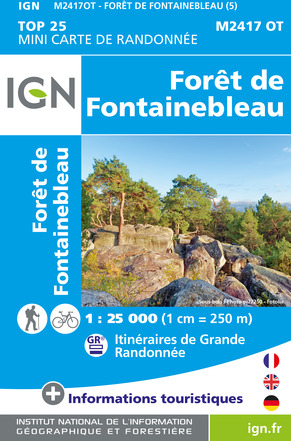
M2417OT - FORÊT DE FONTAINEBLEAU
编辑器 : IGN
收藏 : MINI TOP 25
梯子 : 1:25 000
8.80€
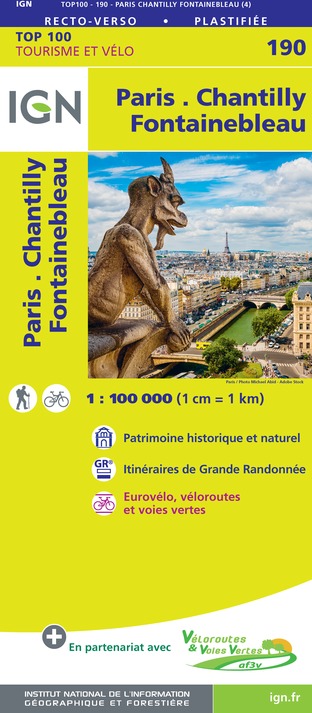
190 PARIS CHANTILLY FONTAINEBLEAU
编辑器 : IGN
收藏 : TOP 100
梯子 : 1:100 000
8.40€
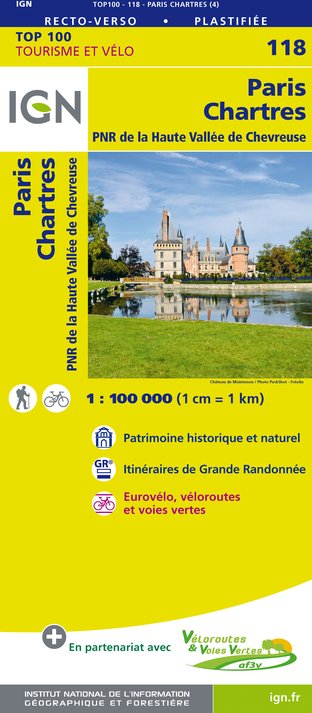
118 PARIS CHARTRES PNR DE LA HAUTE VALLÉE DE CHEVREUSE
编辑器 : IGN
收藏 : TOP 100
梯子 : 1:100 000
8.40€

119 PARIS SENS PNR DU GÂTINAIS FRANÇAIS
编辑器 : IGN
收藏 : TOP 100
梯子 : 1:100 000
8.40€

D77 SEINE-ET-MARNE
编辑器 : IGN
收藏 : CARTES DÉPARTEMENTALES IGN
梯子 : 1:150 000
5.90€

D75-95 ÎLE-DE-FRANCE OUEST
编辑器 : IGN
收藏 : CARTES DÉPARTEMENTALES IGN
梯子 : 1:150 000
5.90€
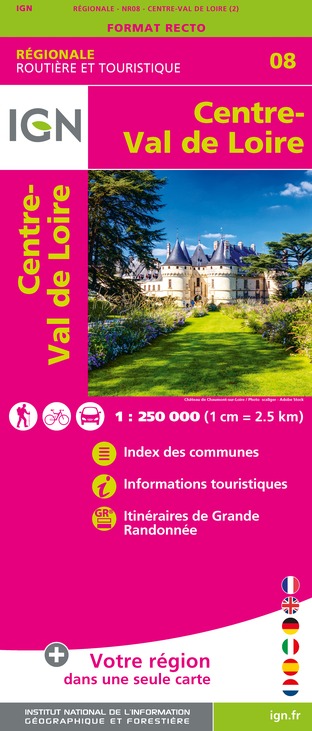
NR08 CENTRE-VAL DE LOIRE
编辑器 : IGN
收藏 : CARTES RÉGIONALES IGN
梯子 : 1:250 000
6.80€

NR03 ÍLE DE FRANCE
编辑器 : IGN
收藏 : CARTES RÉGIONALES IGN
梯子 : 1:250 000
6.80€

NR04 - GRAND EST RECTO/VERSO ARDENNE CHAMPAGNE
编辑器 : IGN
收藏 : CARTES RÉGIONALES IGN
梯子 : 1:250 000
6.80€
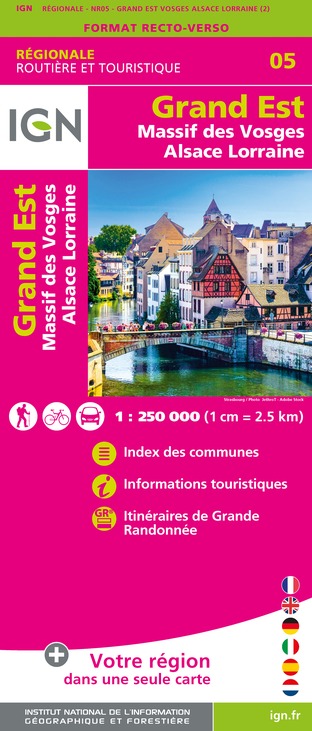
NR05 GRAND EST RECTO/VERSO MASSIF DES VOSGES ALSACE LORRAINE
编辑器 : IGN
收藏 : CARTES RÉGIONALES IGN
梯子 : 1:250 000
6.80€
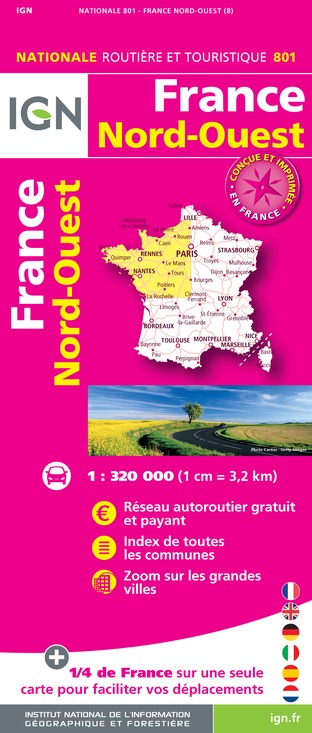
801 FRANCE NORD OUEST
编辑器 : IGN
收藏 : CARTES NATIONALES IGN
梯子 : 1:320 000
6.10€

EUROPE
编辑器 : IGN
收藏 : DÉCOUVERTE DES PAYS DU MONDE IGN
梯子 : 1:2 500 000
7.00€
技术信息
公路自行车
难度
未指定
距离
56 km
练习类型
公路自行车
显示更多信息
高程剖面
起点
77590
Bois-le-Roi
Lat : 48.474568Lng : 2.692292
步骤
兴趣点
数据作者
Quartier Henri IV - Place d'Armes 77300 Fontainebleau France
评级和评论
周围的看点






